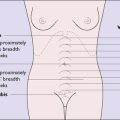Chapter 17 Infections during pregnancy
VAGINAL INFECTIONS
Vaginal infections during pregnancy due to Candida spp., Trichomonas and bacterial vaginosis are discussed on pages 260–262. The diagnosis and treatment are the same as in pregnancy.
BACTERIAL INFECTIONS
Group B streptococcus
Two approaches to selecting those for treatment are widely used: one treats on risk factors alone, the other takes a low vaginal and a rectal swab at 36 weeks’ and then treats those with positive isolates. Both regimens have been shown to be effective. See Box 17.1.
Box 17.1 Strategies to prevent early-onset group B streptococcus (GBS) neonatal sepsis
Gonorrhoea
Depending on the population studied, between 1 and 6% of pregnant women are found to have gonorrhoea on culture studies using the Thayer–Martin medium. Many have no symptoms. In symptomatic gonorrhoea the woman complains of dysuria and a vaginal discharge which occurs within 5 days of sexual intercourse. If the symptoms suggest gonorrhoea, or if the woman’s sexual behaviour suggests that she may have gonorrhoea, cervical and urethral swabs should be taken and inoculated directly on to preheated plates of culture medium. In addition, vaginal swabs should be made for other vaginal infective organisms. The management of gonococcal infection is discussed on page 264.
OTHER INFECTION
Toxoplasmosis
Preventive measures taken by a pregnant woman are more cost-effective:
VIRAL INFECTIONS
Seven viral infections need some discussion.
Genital herpes
Cytomegalovirus infection (CMV)
Screening has proved to be of no value – there is no vaccine available.







